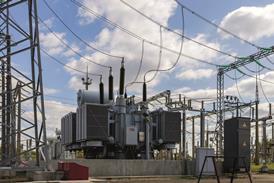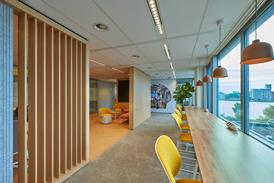- News

All the latest updates on building safety reformRegulations latest
- Focus
- Comment
- Programmes
- CPD
- Building the Future
- Jobs
- Data
- Subscribe
- Events

2024 events calendar
Explore now
Building Awards
Keep up to date
- Building Boardroom
Costing Steelwork 30: Market update and guidance on demonstrating competency

A market update from Aecom, BCSA and Steel for Life
Construction new work output fell by 6.6% in the first half of 2024 but has shown signs of recovery in the second half of the year. The Office for National Statistics has continued to show growth in repair and maintenance output, which recorded a rise of 7.9% in the same period. New construction orders reached their highest level since Q4 2022, a 12% increase when compared with the first half of 2023. Areas of uplift have come by way of the New Prisons Programme, 27% growth in private commercial orders helped by central London office developments and a strong performance in the infrastructure sector.
Business confidence has strengthened in Q2, according to the Institute of Chartered Accountants in England and Wales (ICAEW). Construction sentiment indicators reflect this, and main contractors have a strong pipeline. However, the optimism from the summer forecasts dulled slightly while awaiting the impact of the new government Budget announcements and other global factors. The Bank of England base rate has been further cut to 4.75% when considered against the maintained high of 5.25% at the beginning of the year; this should continue to help restore confidence in the market. This has been a major influence on funding but more specifically on mortgage rates, which has been an impediment to residential development.
Aecom’s building cost index – a composite measure of materials and labour costs – indicated an annual increase of 1.8% in the third quarter. The Department for Business and Trade’s composite building cost indices suggest that material prices are 2.6% lower than this time last year. However, it is worth noting that manufacturing output price is now marginally less than input cost inflation. This does create, even if it is modest, pressure on inflation with plastic and precast concrete products at the top of the inflationary scale. Shipping costs reduced in August but have remained high, with many shipments between Asia and Europe being rerouted to avoid the Red Sea corridor. Demand from the Chinese market has remained subdued, which has assisted in stabilising material and energy prices. An improvement in the Chinese economy and the impacts of new fiscal measures from the change of US government by way of tariffs will have the potential to add increased pressure on building costs.
It is worth noting that there are 64 government elections in 2024, which impacts 49% of the world’s population and has resulted in geopolitical instability and globally the stalling of construction projects. This combined with continued conflict in Ukraine and the Middle East has the potential to increase uncertainty and fluctuate input prices.
Read more…
Already registered? Login here
To continue enjoying Building.co.uk, sign up for free guest access
Existing subscriber? LOGIN
Stay at the forefront of thought leadership with news and analysis from award-winning journalists. Enjoy company features, CEO interviews, architectural reviews, technical project know-how and the latest innovations.
- Limited access to building.co.uk
- Breaking industry news as it happens
- Breaking, daily and weekly e-newsletters
Get your free guest access SIGN UP TODAY

Subscribe now for unlimited access
Subscribe to Building today and you will benefit from:
- Unlimited access to all stories including expert analysis and comment from industry leaders
- Our league tables, cost models and economics data
- Our online archive of over 10,000 articles
- Building magazine digital editions
- Building magazine print editions
- Printed/digital supplements
Subscribe now for unlimited access.
View our subscription options and join our community

















